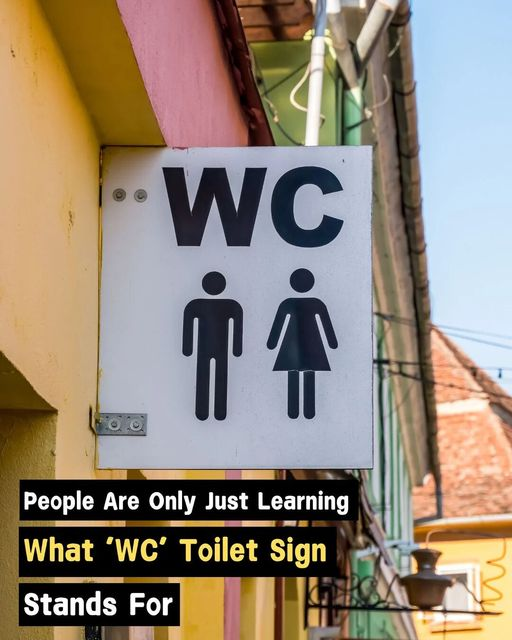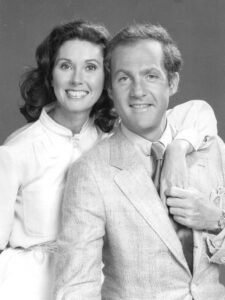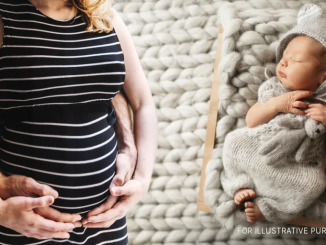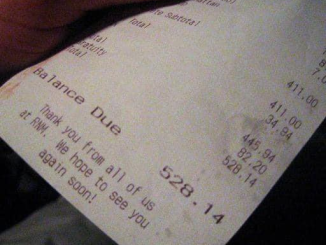
Have you ever seen the letters “WC” outside a public bathroom and wondered what they mean? You’re not alone! Many people around the world are curious about the “WC,” which refers to a room with a toilet and a sink.
While we can explain what “WC” stands for, it might not make much more sense than other terms like restroom, bathroom, or loo.
In 2020, a couple named Shelby and Dylan made a TikTok video showing a funny difference between how some Americans and Canadians refer to bathrooms. In the video, Dylan walks by a sign that says “washroom” and asks, “What in the world is a washroom?” He humorously wonders what people are washing in there, adding, “The only thing I wash in there is my hands.” Off-camera, Shelby chimes in, asking, “Do you rest in a restroom?”
It’s interesting to see how different cultures use different terms for the same place!
“That’s a good point. None of these terms make much sense,” Dylan says in the video.
Many people joined the conversation online, sharing their thoughts about what they call this important room.
One user commented, “It’s called a bathroom, restroom, washroom, and toilet.”
Another follower shared a funny story from Disneyland, saying they “asked for the washroom” and ended up being sent to the laundromat instead!
A third user joked, “Wait until he finds out about water closets.”
**Water Closet**
According to Merriam-Webster’s Dictionary, a “water closet” is a term used to describe “a room with a toilet” or “a toilet bowl and its accessories.”
Long ago, when people talked about using the bathroom, it often meant taking a bath. The term “restroom” suggested a place to rest or get ready by using the sink and mirror.
Lastly, if you needed to go potty, you would use the toilet in the water closet. Depending on where you are in the world, this room is called many different names, including loo, restroom, bathroom, washroom, lavatory, or WC.

In modern times, you will often see signs that say “WC” in public places like airports, restaurants, or hotels. This is just another way to say “restroom” or “bathroom,” but it is usually seen as a more formal or international sign for places that welcome travelers from different countries.
**History of the WC**
Before the 19th century in America, having an indoor toilet was a luxury only for wealthy people. Most people used outhouses or outdoor toilets. While many homes had “bathrooms” for taking baths, these rooms usually didn’t have toilets. The installation of indoor plumbing started to become common in the late 1800s, leading to the creation of the water closet by 1890. These early water closets had toilets that were separate from bathing areas.
It wasn’t until the early 20th century that bathrooms began to combine both bathing areas and toilets into one room. This design helped save space and made plumbing simpler, but it also reduced privacy, especially when multiple people were using the bathroom.
Over time, the term “water closet” changed to refer to a small, private room within a larger bathroom that was used only for the toilet. These water closets often have a small sink for handwashing, making them convenient and self-contained.

To understand the term “water closet,” many people shared their thoughts on Reddit in a post titled, “Why is a public WC called bathroom if there is [no] bath?”
In response, one Reddit user pointed out, “Americans might ask: ‘Why is it called a WC (water closet) if it isn’t even a closet?” This user explained that in the U.S., “bathroom” or “restroom” is the common way to refer to a “room with a toilet.” Other countries use different terms, like “WC,” “lavatory,” or “loo.”
Another user mentioned that in Russian, the term translates to “a room without windows,” even if there is a window. A third user shared that in Esperanto, it’s called “necesejo,” meaning “necessary place.”
Other Reddit users talked about the differences between “washroom,” “bathroom,” and “restroom.” One commenter noted, “Canada famously uses ‘washroom,’” while another clarified that in the Midwest, “washroom” is also common, but “bathroom” and “restroom” are used more frequently.
One user humorously stated, “Best one, I think. You should be washing in there… not resting.”
What do you think about the term WC? What do you call the room that has a toilet? We would love to hear your opinions, so please share your thoughts!
Elinor Donahue’s Remarkable 60-Year Career: How She Became a Hollywood Staple
Elinor Donahue is famous for her role on the popular TV show “Father Knows Best,” but her career didn’t stop there. She continued to work on screen and in other areas after the show ended.
Now at 86 years old, Elinor Donahue recently appeared as a guest on the soap opera “The Young and the Restless.”

On “Father Knows Best,” Elinor Donahue played Betty ‘Princess’ Anderson, a key character in the show about a happy middle-class family in the Midwest.
The show began as a radio program in 1949 and aired every Thursday until 1954. After that, CBS brought it to TV, keeping only Robert Young, who played the father, Jim Anderson.
During her six years on the popular show, which was among the top ten TV shows in America, Elinor also appeared on “Crossroads” and “The George Burns and Gracie Allen Show.” Her busy schedule was so demanding that she admitted she didn’t have time to watch her own show.

Elinor Donahue, who was born in Tacoma in 1937, worked hard on “Father Knows Best.” By the time she got home at night, she would have dinner and then prepare for the next day’s lines. This busy schedule meant she never had time to watch the show.
As a teenager, Elinor’s acting career took off, and she became the main provider for her family. She appeared in movies like *Love is Better than Ever* with Elizabeth Taylor and *Girls Town*.
Since Elinor was still a child, she needed an adult with her on set. With her father not around and her mother working full-time, her mom Doris had to quit her job to be with her.
After “Father Knows Best,” Elinor appeared on other popular shows such as “The Andy Griffith Show,” “Dr. Kildare,” “Star Trek,” and “Mork & Mindy.”

Elinor Donahue, now 86, has appeared in over 70 TV shows and movies like *Winter Wonderland* and *Pretty Woman*.
At 19, she married her first husband, hoping it would make her feel like a grown-up. She admitted to Emmy TV Legends that she felt like a teenager at that age, saying, “I was like a 13-year-old 19.” She felt she hadn’t grown up properly and thought that marriage and having a baby would help her mature.
The person she married was Richard Smith, a sound man from “Father Knows Best.” Elinor decided to marry him because she thought it was her chance to become an adult.

Elinor Donahue shared a funny story about how she got engaged. She said that after a movie date, her first husband, Richard Smith, whispered in her ear, “I love you and I’d like to marry you.” She laughed and replied, “Okay.”
Elinor had her first son, Brian, with Richard. They were married for six years before divorcing in 1961.
In 1962, she married TV producer Harry Ackerman, who was 20 years older than her. They had three sons together and were happily married for almost 30 years until he passed away in 1991.
The following year, Elinor married her third husband, Lou Genevrino, a contractor. She has been retired from acting for the past decade.
Despite never planning to be on screen, Elinor Donahue has had a remarkable and successful career. She has appeared in more than 70 TV shows and movies like *Winter Wonderland* and *Pretty Woman*. Her role as Betty Anderson on *Father Knows Best* made her a household name, and she has continued to impress audiences with her work in shows like *The Andy Griffith Show*, *Star Trek*, and *Mork & Mindy*.
Share this with all the *Father Knows Best* fans you know to celebrate her impressive achievements and enduring impact on television!



Leave a Reply